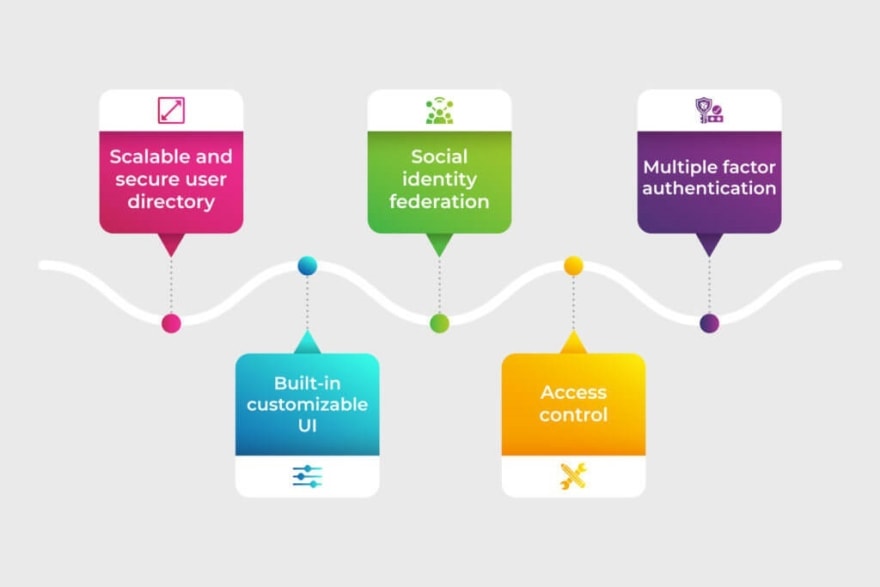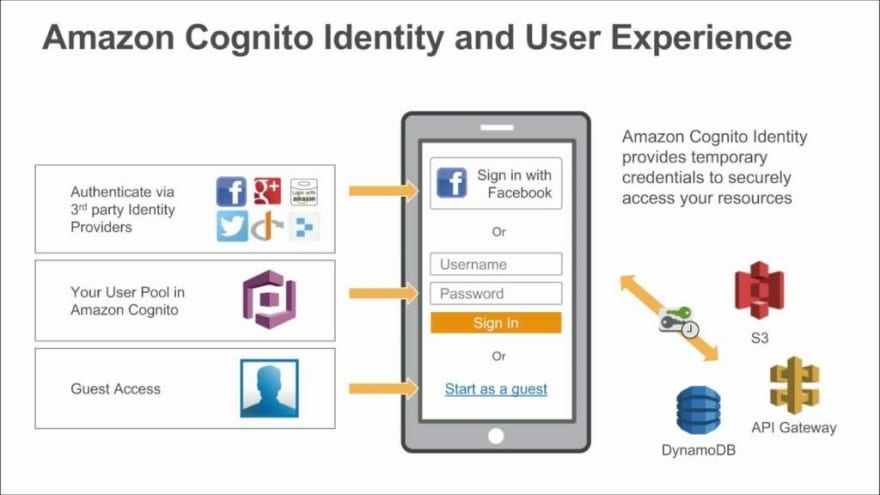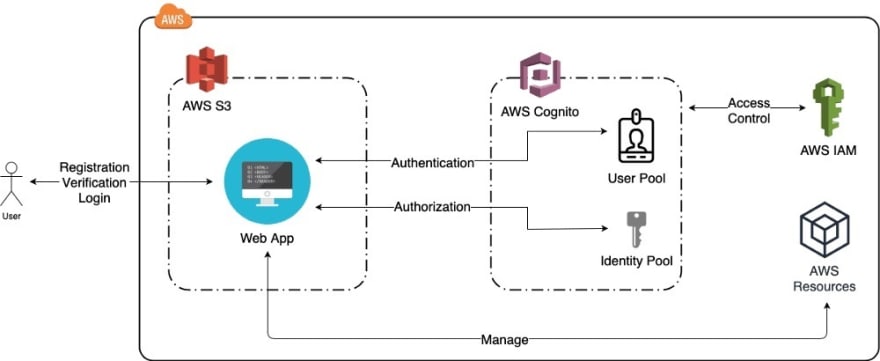On average, around 1250 apps are uploaded every day on Playstore. This adds up the pressure of becoming the best pick for your customers. Loss of user data can be a major turn off for your client. When you are building an application, you probably know that your user can use multiple devices. It is a tough task for the backend developers to design an infrastructure that can synchronize user’s data over various devices. Moreover, it also includes the strenuous task of deploying and managing the infrastructure of your application.
AWS Cognito simplifies user authentication and synchronization over multiple devices. It also supports guest user features. After your client is satisfied with the application, the data can be seamlessly transferred to the user pool with the previous data synchronized. With AWS Cognito, you don’t need to worry about running your backend service and designing user identity and synchronization features. This makes you focus more on the working part of your application. SNDK Corp offers you efficient solutions for migrating your application to the Amazon cloud.
What is AWS Cognito?
Cognito is a user identity and authentication web service by Amazon. It synchronizes the user data pool over various devices in the Amazon Cloud. Unique identities of a user can be created using third party social media identity providers like Google, Facebook, and Apple too. It gives you an edge from your peers as you focus more on building the app logic and user experience while AWS Cognito manages the heavy-duty of user identification, managing, storage, and synchronization.
Top 5 Features of AWS Cognito
Here we discuss the top five features of AWS Cognito that makes it as an ideal choice of the business owners. They are as follow.

1: Scalable and secure user directory
The user pool of your application will be built and managed by Amazon itself. The secure user directory is highly scalable up to millions of users. Also, it is easy to set up. The unique identities of each user can be created. With the directory, you can enable your user to sign in to the mobile or web application through Amazon Cognito.
2: Social identity federation
Your users can also sign in through various social identity providers other than AWS Cognito. For instance, users can create their profile using Google, Facebook, or Apple login. This provides a flawless and effortless experience to your users. Whether the user creates their profile using any of the aforesaid methods, you will have a record in your directory.
3: Multiple factor authentication
Amazon never compromises on the security part. You can also enable two-factor authentication to provide a secure environment for your users. With data breach cases rising, this feature in your application will win the trust of your customers. Confirmation emails and text messages will also be sent to users. Data sent is encrypted by AWS Amplify.
4: Built-in customizable UI
AWS Cognito provides you with a built-in customizable User Interface. This reduces your frontend load too. You will get forms for sign-in, sign-up, password recovery, federated authentication, and MFA (Multi-Factor Authentication). You can customize the forms with your brand name and logo. It also provides error messages.
5: Access control
You can define roles and map authenticated users with specific roles. This will enable access control of your application resources and differentiate between an authenticated and a non-signed in user. AWS Cognito provides a solution for this feature. This also adds up to the security of your application.
The architecture of AWS Cognito
From the users’ perspective, these are the processes that are involved as per SNDK Corp-
1: Registration:
The user enters the email and password to get registered to your application. The data gets stored in the Cognito user pool.
2: Verification:
The verification email or text is sent to the user. This ensures that only a valid user gets registered.
3: Login:
The user will now log in with the previously filled credentials. AWS Cognito will provide a token upon successful login.
4: Authorization:
The logged-in users will get authorized to use the resources as defined by their IAM roles.
Use Cases of AWS Cognito
AWS Cognito removes the load of creating and deploying a backend architecture. These are the following cases where AWS Cognito is useful:

- There is a need for automated email-verification to ensure higher security and provide trust to its users.
- Allowing access control to AWS resources like AWS S3 bucket only after user authentication.
- It can also be used to implement Artificial Intelligence using lambda For instance when a user sees a product, a function can be invoked to display related products.
Also Read, AWS CodeDeploy – Automating Deployment of Applications.
Conclusion
Using AWS Cognito for user authentication is probably a faster solution than creating the whole user authentication system from scratch. Moreover, you won’t need to create a backend system as it will be provided by Cognito which will again save precious time. This is certainly a good choice if you want to use advanced and secure features like multi-factor authentication and password recovery. With SNDK Corp you can migrate your application to Amazon Cloud to avail the benefits of this very useful service. A secure and user-friendly authentication system is a very crucial factor in winning trust from your clients.







Top comments (0)